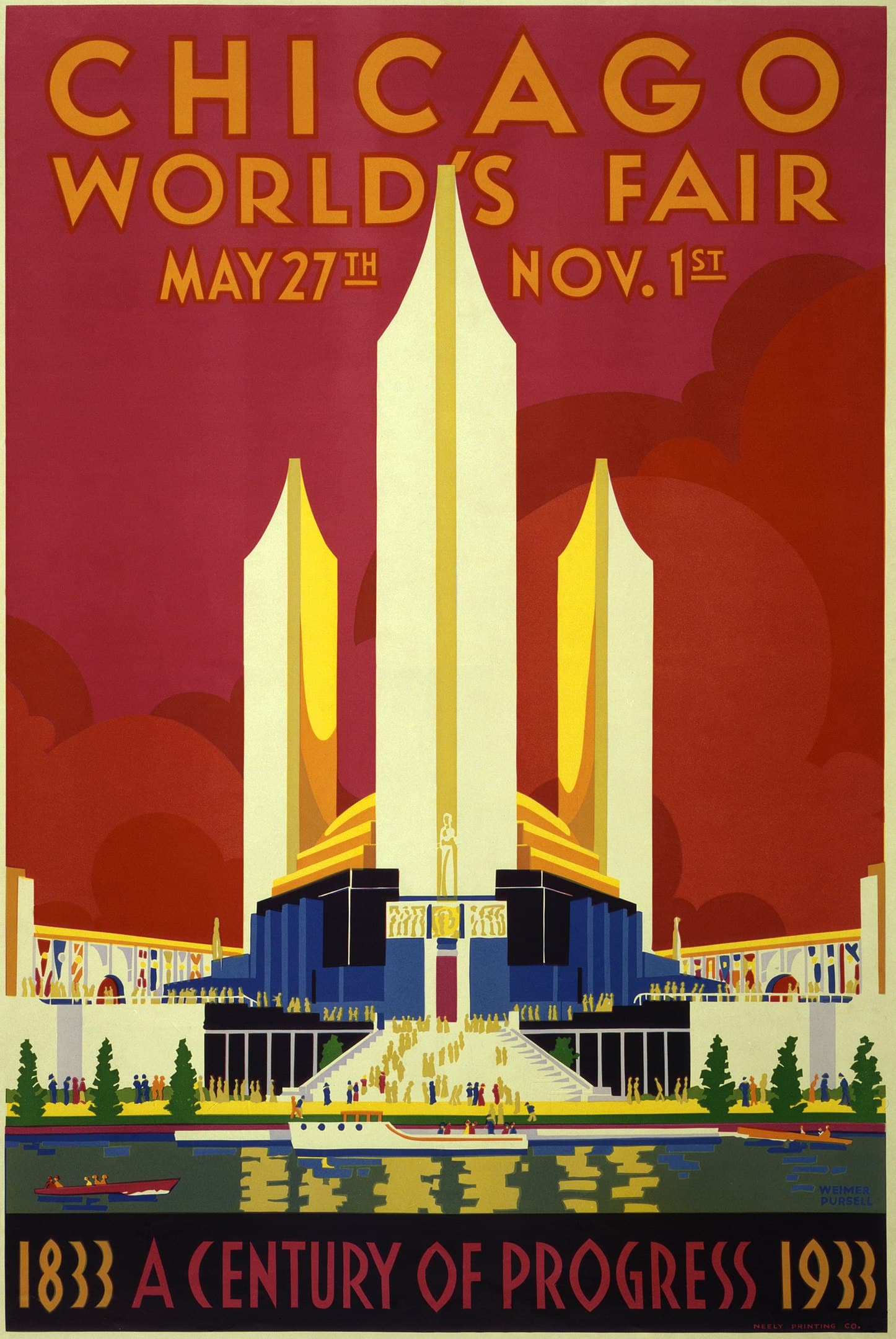A style of visual arts, architecture, and product design, Arts Décoratifs (France) or better known as Art Deco was born in France in the 1910s, just before World War I. Art Deco flourished in the United States and Europe in the 1920s and the 1930s. Art Deco has influenced architectural designs such as bridges, buildings from skyscrapers to cinemas, vehicles, furniture, fashion and jewellery with style. Then how does Art Deco affect graphic design? This article will discuss how Art Deco develops in art, especially in the form of graphic design.
Brief History of Art Deco
The Exposition internationale des arts decoratifs et industrialels modernes, an international exhibition of the decorative arts and modern industry staged in Paris in 1925, is the origin of the term “Art Deco”. Stylish design, exquisite craftsmanship and expensive materials are integrated into Art Deco. In his prime, it symbolized wealth, luxury, joy and optimism in social and technical progress. Art Deco features the bold of Cubism and Vienna Secession (related to Art Nouveau), geometric shapes, vibrant colours, updated craftsmanship, and exotic Chinese, Japanese, Indian, Persian, ancient Egyptian, and Mayan art styles. All of that had an impact on the development of Art Deco.
Art Deco was more muted during the Great Depression of the 1930s. Plastics, stainless steels, and chrome plating are some of the new materials that have emerged. In the 1930s, the Streamline Moderne, a more streamlined design variation, first appeared. It features a curved shape and a polished smooth surface. Art Deco was one of the first global architectural movements, but as World War II unfolded and the highly fruitful and unadorned modern architecture movement and International architectural style that followed, it lost its sway.

Art Deco in Graphic Art
The Art Deco style first appeared in graphic art in the years leading up to World War I. Art Deco was featured in posters and costumes created by Léon Bakst for the Ballets Russes as well as in Paul Poiret’s fashion catalog in Paris.

American fashion magazines like Vogue, Vanity Fair, and Harper’s Bazaar immediately adopted the new trend and helped it gain popularity in the country.

Posters from the Art Nouveau era typically promoted theatre events or cabarets. Travel posters created by airlines and steamship lines rose to prominence in the 1920s. In order to draw attention to the marketed goods, the fashion underwent a significant transformation in the 1920s. The graphics became clearer, more angular, linear, and energetic, and they were frequently set against monochromatic backgrounds (as seen on one of the Moulin Rouge’s advertisements below). At this time poster designs frequently featured well-known singers and dancers from the time, women smoking cigarettes, steamships, and airplanes. A brand-new poster subgenre emerged in the 1930s during the Great Depression in the United States. In order to promote tourism and cultural events.

Art Deco posters today appear even more spectacular because of developments in technology and editing software. You can tell by looking at them how well they highlight the key elements of the style. One of the most recognizable Art Deco posters produced was The Great Gatsby (2013) movie poster. This book-to-film adaption portrays the 1920s upper class world. The 2013 Great Gatsby movie poster, which was designed in the Art Deco style, appears opulent.

Art Deco Characterizatics
The foundation for the stylistic direction of Art Deco was being laid by a number of artistic movements throughout this time. Futurism’s idea of the pinnacles of civilization and Cubism’s brazen abstraction were both borrowed by the movement, which gave the style its unabashed and extravagant embellishment. Geometric shapes especially triangles, strong lines, zigzags, thick-stroked type, lots of white space, and chevron patterns are some of the most typical Art Deco graphic design components.

Final Words
A synthesis of numerous styles and influences, Art Deco was created to celebrate modernity and offer hope to those who had been devastated by war. When discussing this style, smooth lines, bold geometry, meticulous craftsmanship, rich colors, sumptuous patterns, gold hues, and richness spring to mind. Like so many other design fads, Art Deco eventually gave way to its antithesis. With the start of World War II and the subsequent rationing, artistic tendencies tended to be sparse and practical. Sometimes it seems as though the modern period, which is centered on interactive design and simple usability, is even more minimal. Art Deco is the extravagant and online design of the previous century. Last chance for extravagant ornamentation. Art Deco is incredibly adaptable and may be used in a wide range of contexts, including, but not limited to, furniture design, graphic arts, architecture, sculpture, and cinematic animation. Even when discussing art from the 1920s, it is always practical and contemporary-looking. You can play around with it. Art Deco components made your project unquestionably seem glitzy and unique.

